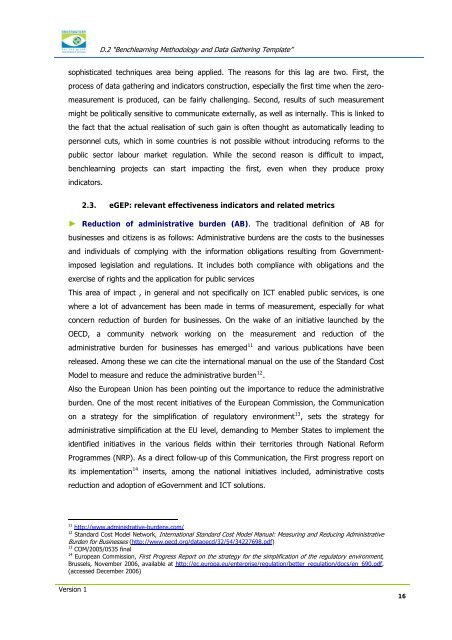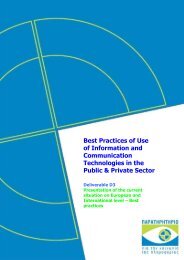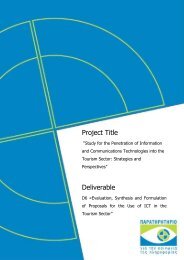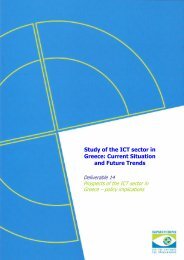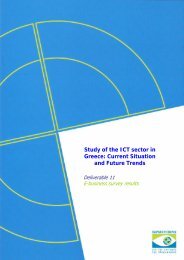Benchlearning methodology and data gathering template
Benchlearning methodology and data gathering template
Benchlearning methodology and data gathering template
- No tags were found...
Create successful ePaper yourself
Turn your PDF publications into a flip-book with our unique Google optimized e-Paper software.
D.2 “<strong>Benchlearning</strong> Methodology <strong>and</strong> Data Gathering Template”sophisticated techniques area being applied. The reasons for this lag are two. First, theprocess of <strong>data</strong> <strong>gathering</strong> <strong>and</strong> indicators construction, especially the first time when the zeromeasurementis produced, can be fairly challenging. Second, results of such measurementmight be politically sensitive to communicate externally, as well as internally. This is linked tothe fact that the actual realisation of such gain is often thought as automatically leading topersonnel cuts, which in some countries is not possible without introducing reforms to thepublic sector labour market regulation. While the second reason is difficult to impact,benchlearning projects can start impacting the first, even when they produce proxyindicators.2.3. eGEP: relevant effectiveness indicators <strong>and</strong> related metrics► Reduction of administrative burden (AB). The traditional definition of AB forbusinesses <strong>and</strong> citizens is as follows: Administrative burdens are the costs to the businesses<strong>and</strong> individuals of complying with the information obligations resulting from Governmentimposedlegislation <strong>and</strong> regulations. It includes both compliance with obligations <strong>and</strong> theexercise of rights <strong>and</strong> the application for public servicesThis area of impact , in general <strong>and</strong> not specifically on ICT enabled public services, is onewhere a lot of advancement has been made in terms of measurement, especially for whatconcern reduction of burden for businesses. On the wake of an initiative launched by theOECD, a community network working on the measurement <strong>and</strong> reduction of theadministrative burden for businesses has emerged 11 <strong>and</strong> various publications have beenreleased. Among these we can cite the international manual on the use of the St<strong>and</strong>ard CostModel to measure <strong>and</strong> reduce the administrative burden 12 .Also the European Union has been pointing out the importance to reduce the administrativeburden. One of the most recent initiatives of the European Commission, the Communicationon a strategy for the simplification of regulatory environment 13 , sets the strategy foradministrative simplification at the EU level, dem<strong>and</strong>ing to Member States to implement theidentified initiatives in the various fields within their territories through National ReformProgrammes (NRP). As a direct follow-up of this Communication, the First progress report onits implementation 14 inserts, among the national initiatives included, administrative costsreduction <strong>and</strong> adoption of eGovernment <strong>and</strong> ICT solutions.11 http://www.administrative-burdens.com/12 St<strong>and</strong>ard Cost Model Network, International St<strong>and</strong>ard Cost Model Manual: Measuring <strong>and</strong> Reducing AdministrativeBurden for Businesses (http://www.oecd.org/<strong>data</strong>oecd/32/54/34227698.pdf)13 COM/2005/0535 final14 European Commission, First Progress Report on the strategy for the simplification of the regulatory environment,Brussels, November 2006, available at http://ec.europa.eu/enterprise/regulation/better_regulation/docs/en_690.pdf,(accessed December 2006)Version 116


